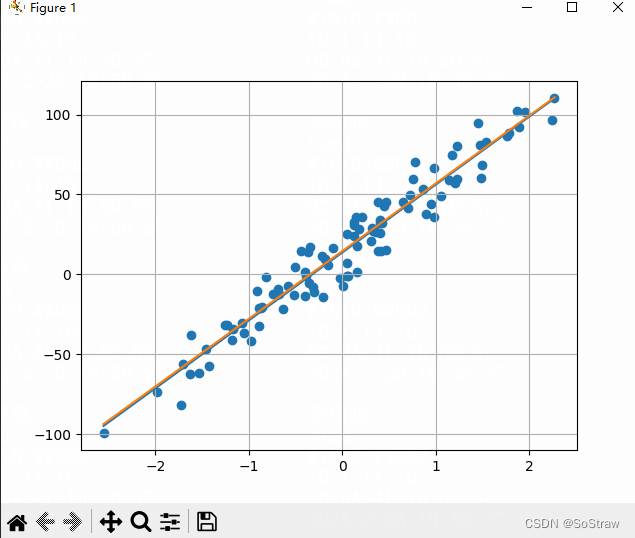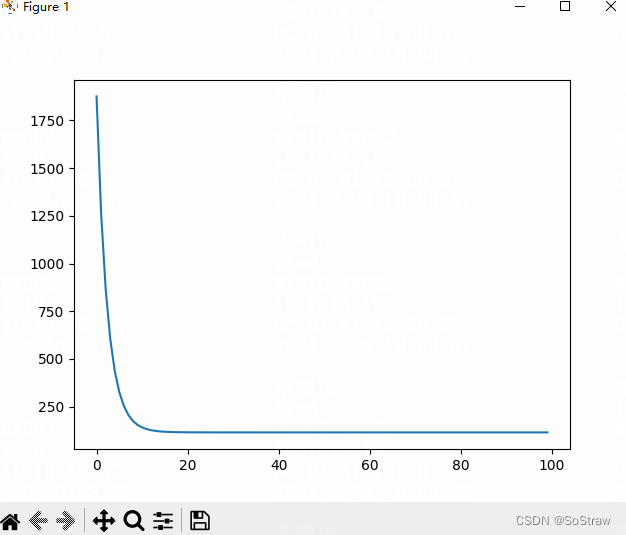使用sklearn.dataset 的make_regression创建用于线性回归的数据集
def create_dataset():x, y, coef = make_regression(n_samples=100, noise=10, coef=True, bias=14.5, n_features=1, random_state=0)return torch.tensor(x), torch.tensor(y), coef加载数据集,并拆分batchs训练集
def load_dataset(x, y, batch_size):data_len = len(y)batch_num = data_len // batch_sizefor idx in range(batch_num):start = idx * batch_numend = idx * batch_num + batch_numtrain_x = x[start : end]train_y = y[start : end]yield train_x, train_y定义初始权重和定义计算函数
w = torch.tensor(0.1, requires_grad=True, dtype=torch.float64)
b = torch.tensor(0, requires_grad=True, dtype=torch.float64)
def linear_regression(x):return x * w + b损失函数使用平方差
def linear_loss(y_pred, y_true):return (y_pred - y_true) ** 2优化参数使用梯度下降方法
def sgd(linear_rate, batch_size):w.data = w.data - linear_rate * w.grad / batch_sizeb.data = b.data - linear_rate * b.grad / batch_size训练代码
def train():# 加载数据x, y, coef = create_dataset()data_len = len(y)# 定义参数batch_size = 10epochs = 100linear_rate = 0.01# 记录损失值epochs_loss = []# 迭代for eid in range(epochs):total_loss = 0.0for train_x, train_y in load_dataset(x, y, batch_size):# 输入模型y_pred = linear_regression(train_x)# 计算损失loss_num = linear_loss(y_pred, train_y.reshape(-1,1)).sum()# 梯度清理if w.grad is not None:w.grad.zero_()if b.grad is not None:b.grad.zero_()# 反向传播loss_num.backward()# 更新权重sgd(linear_rate, batch_size)# 统计损失数值total_loss = total_loss + loss_num.item()# 记录本次迭代的平均损失b_loss = total_loss / data_lenepochs_loss.append(b_loss)print("epoch={},b_loss={}".format(eid, b_loss))# 显示预测线核真实线的拟合关系print(w, b)print(coef, 14.5)plt.scatter(x, y)test_x = torch.linspace(x.min(), x.max(), 1000)y1 = torch.tensor([v * w + b for v in test_x])y2 = torch.tensor([v * coef + 14.5 for v in test_x])plt.plot(test_x, y1, label='train')plt.plot(test_x, y2, label='true')plt.grid()plt.show()# 显示损失值变化曲线plt.plot(range(epochs), epochs_loss)plt.show()
拟合显示还不错

损失值在低5次迭代后基本就很小了













)
-2023年OD统一考试(C卷)---Python3--开源)

)



